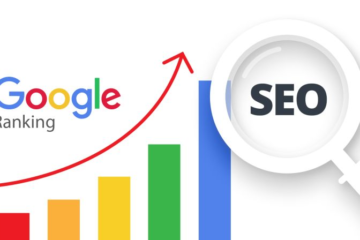In today’s digital age, ecommerce development has become a vital part of building a successful online business. The process of ecommerce development involves creating and optimizing online stores to provide an excellent user experience, streamline purchasing processes, and maximize sales.
In this comprehensive guide, we will explore the concept of ecommerce development, its importance, key steps, best practices, challenges, and future trends.
Table of Contents
- What is Ecommerce Development?
- Importance of Ecommerce Development
- Key Steps in Ecommerce Development
- Best Practices for Ecommerce Development
- Challenges in Ecommerce Development
- Future Trends in Ecommerce Development
- Conclusion
What is Ecommerce Development?
Ecommerce development is the process of designing, building, and maintaining an online store where businesses can sell products or services to customers over the internet. This process involves several critical components such as creating a user-friendly website, integrating payment gateways, ensuring secure transactions, and optimizing the site for search engines to attract potential customers.
The primary objective of ecommerce development is to create a seamless and engaging shopping experience that encourages customers to make purchases, return for future transactions, and recommend the store to others. It encompasses various tasks, including web design, platform selection, payment integration, product catalog management, security, and scalability.
Importance of Ecommerce Development
1. Expanding Market Reach
An online store allows businesses to reach a global audience, breaking geographical barriers that limit traditional brick-and-mortar stores. With ecommerce, businesses can sell their products or services to customers from different regions, countries, or even continents, vastly expanding their potential customer base.
2. Enhanced Customer Experience
A well-developed ecommerce site provides customers with a convenient shopping experience. Features such as easy navigation, quick loading times, secure payment options, and personalized recommendations enhance customer satisfaction, encouraging repeat purchases.
3. Cost-Effective Operations
Ecommerce development reduces many of the costs associated with traditional retail, such as rent, utilities, and in-store staffing. Additionally, automated processes such as inventory management and order processing can significantly lower operational costs.
4. Data-Driven Decision Making
Ecommerce platforms provide valuable insights into customer behavior, preferences, and buying patterns. This data allows businesses to make informed decisions regarding marketing strategies, inventory management, and product offerings, leading to increased sales and improved customer retention.
5. Competitive Advantage
In today’s digital landscape, businesses without an online presence are at a significant disadvantage. Ecommerce development allows companies to stay competitive by offering an accessible, user-friendly shopping experience that meets modern consumer expectations.
Key Steps in Ecommerce Development
Developing a successful ecommerce store involves several key steps, each contributing to the overall effectiveness and efficiency of the online business:
1. Market Research and Planning
Before starting the ecommerce development process, it’s crucial to conduct thorough market research to understand the target audience, their preferences, and competitors. Identifying gaps in the market and defining a unique selling proposition (USP) will help shape the store’s offerings and marketing strategies.
2. Choosing the Right Ecommerce Platform
Selecting the right ecommerce platform is critical to the success of your online store. Popular platforms like Shopify, WooCommerce, Magento, and BigCommerce offer various features, customization options, and scalability. The choice depends on factors such as business size, budget, product range, and specific functionality needs.
3. Designing the User Interface (UI) and User Experience (UX)
A visually appealing and user-friendly design is essential for attracting and retaining customers. Focus on creating a clean, intuitive layout that allows customers to navigate easily, find products quickly, and complete purchases without hassle. Optimize for both desktop and mobile devices to ensure a seamless experience across all platforms.
4. Developing the Backend and Frontend
The backend of an ecommerce site handles all the server-side operations, such as database management, user authentication, and transaction processing. The frontend is the customer-facing part of the website, including the design, layout, and interactive features. Both should be developed using robust technologies and frameworks to ensure security, speed, and scalability.
5. Integrating Payment Gateways
Payment gateways are crucial for processing transactions securely. Integrate multiple payment options, such as credit/debit cards, digital wallets (PayPal, Apple Pay), and other local payment methods to cater to diverse customer preferences. Ensure that the payment process is quick, easy, and secure to build customer trust.
6. Setting Up Product Management and Inventory Control
Efficient product management is essential for maintaining an organized and easy-to-navigate catalog. Include high-quality product images, detailed descriptions, pricing, and stock availability. Implement inventory control systems to manage stock levels, avoid overselling, and automate reordering processes.
7. Implementing Security Measures
Security is paramount in ecommerce development. Implement SSL certificates, two-factor authentication, secure payment gateways, and compliance with standards such as PCI DSS (Payment Card Industry Data Security Standard) to protect customer data and transactions from potential threats.
8. Testing and Quality Assurance
Before launching the ecommerce site, conduct extensive testing to identify and fix any bugs or issues. Test all functionalities, including the shopping cart, payment process, product search, and mobile responsiveness, to ensure a smooth and error-free user experience.
9. Launching the Store
Once testing is complete and any issues have been resolved, launch the store and start promoting it through various digital marketing channels such as social media, email marketing, SEO, and paid advertising.
10. Ongoing Maintenance and Optimization
Ecommerce development does not end with the launch. Regularly update the website, add new features, fix bugs, and optimize performance to keep up with changing market trends and customer expectations.
List of Best Ecommerce Website Development Company in India
Based on these factors, here are some highly-rated eCommerce website development companies in India:
- Webandcrafts: Known for their expertise in Magento, Shopify, and custom development.
- Emizen Tech: Offers comprehensive eCommerce solutions and has a strong focus on customer satisfaction.
- ControlF5: Specializes in custom eCommerce development and provides end-to-end solutions.
- Elsner Technologies Pvt Ltd: Offers a wide range of eCommerce services, including development, design, and marketing.
- MOBIKASA: Known for their expertise in mobile app development and eCommerce solutions.
Best Practices for Ecommerce Development
1. Focus on Mobile Optimization
With a significant number of online shoppers using mobile devices, optimizing your ecommerce site for mobile is essential. Ensure that your site is responsive, fast-loading, and easy to navigate on smartphones and tablets.
2. Enhance Page Load Speed
A fast-loading website is crucial for retaining customers and improving search engine rankings. Optimize images, use caching, and minimize code to reduce loading times and enhance user experience.
3. Implement a Clear and Simple Navigation
Simplify the site’s navigation to help users find products and information quickly. Use intuitive categories, filters, and search functionality to make the browsing experience seamless.
4. Use High-Quality Product Images and Descriptions
Visual content plays a significant role in online shopping. Use high-resolution images from multiple angles and provide detailed product descriptions to help customers make informed purchasing decisions.
5. Optimize for SEO
Optimize your ecommerce site for search engines by using relevant keywords, meta tags, and descriptions. Regularly update content, including product pages, blogs, and landing pages, to improve search engine visibility and attract more organic traffic.
6. Utilize Analytics Tools
Leverage analytics tools such as Google Analytics to monitor user behavior, track key performance indicators (KPIs), and identify areas for improvement. Use data-driven insights to enhance the site’s performance and user experience.
7. Prioritize Security
Ensure that your ecommerce site is secure by using HTTPS, encrypting customer data, and complying with security standards. Regularly update software and plugins to protect against vulnerabilities.
Challenges in Ecommerce Development
1. Ensuring Security
One of the biggest challenges in ecommerce development is ensuring the security of customer data and transactions. Cyber threats like hacking, phishing, and data breaches can damage a business’s reputation and result in financial losses.
2. Managing Customer Expectations
Customers expect a seamless, fast, and personalized shopping experience. Meeting these expectations requires continuous optimization, new feature implementation, and effective customer service.
3. Handling Technical Issues
Ecommerce sites can face technical challenges such as slow loading times, server crashes, and software bugs. These issues can disrupt the shopping experience and lead to lost sales.
4. Dealing with Competition
The ecommerce landscape is highly competitive. To stay ahead, businesses must constantly innovate, offer unique products or services, and maintain a strong digital presence.
5. Integrating Multiple Systems
Integrating various systems such as inventory management, payment processing, and customer relationship management (CRM) can be complex and time-consuming, requiring careful planning and execution.
Future Trends in Ecommerce Development
1. Artificial Intelligence and Machine Learning
AI and machine learning are revolutionizing ecommerce by enabling personalized recommendations, automated customer support, and advanced analytics. Businesses can leverage these technologies to enhance user experience and optimize operations.
2. Voice Commerce
Voice-enabled devices like smart speakers are becoming increasingly popular, and more consumers are using voice search to find products and make purchases. Ecommerce sites need to optimize for voice search to stay competitive.
3. Augmented Reality (AR)
AR technology allows customers to visualize products in their own environment, enhancing the online shopping experience. Implementing AR features can help reduce return rates and increase customer satisfaction.
4. Mobile-First Development
As mobile commerce continues to grow, ecommerce sites must prioritize mobile-first development, ensuring that the site is optimized for mobile users in terms of speed, navigation, and usability.
5. Sustainable Ecommerce
Consumers are becoming more environmentally conscious, and businesses are adopting sustainable practices. Ecommerce sites that promote eco-friendly products, reduce packaging waste, and implement sustainable supply chains are likely to gain a competitive edge.
Conclusion
Ecommerce development is a dynamic and evolving process that requires careful planning, execution, and continuous improvement. By understanding its importance, following best practices, and staying ahead of emerging trends, businesses can build a thriving online store that attracts customers




